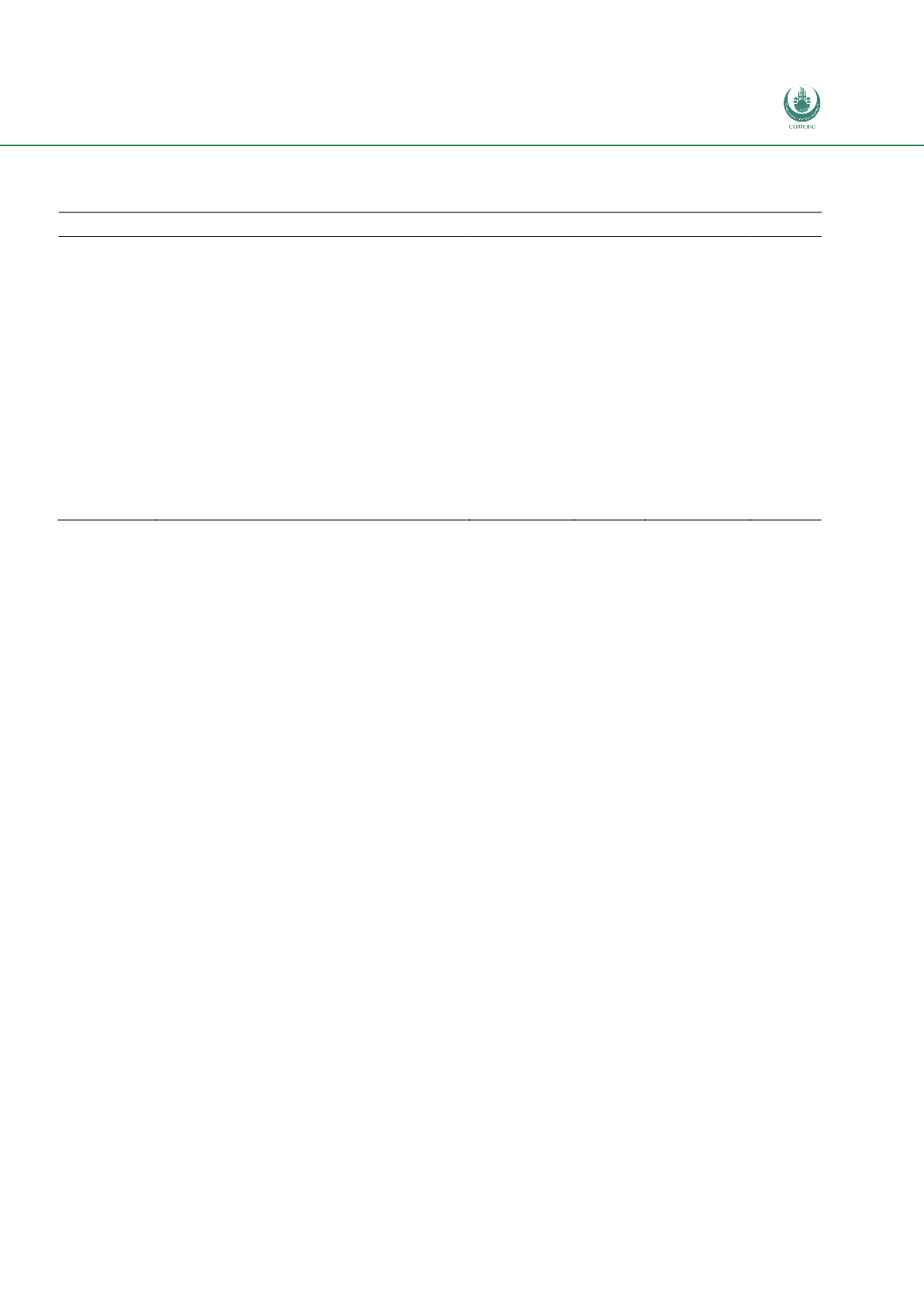

Preferential Trade Agreements and Trade Liberalization Efforts in the OIC Member States
With Special Emphasis on the TPS-OIC
175
Table 47: Top 10 Exported Products by Pakistan to TPS-OIC Countries 2012 & 13 (1000s of USD)
Product
Product Name
2012
2013
Exports
Share
Exports
Share
711319
Articles of jewellery
1,510,613 31.62%
392,531 10.08%
100630
Semi-milled/wholly milled rice
457,640 9.58%
529,882 13.61%
271019
Petroleum oils
306,019 6.41%
392,059 10.07%
520942
Woven fabrics of cotton
255,212 5.34%
280,680
7.21%
390760
Poly(ethylene terephthalate)
123,780
2.59%
102,924
2.64%
520932
Woven fabrics of cotton, cont. 85%
83,605
1.75%
79,013
2.03%
170199
Cane/beet sugar
35,044
0.73%
96,781
2.49%
20110
Carcasses/halfof bovine animals
62,925
1.32%
53,305
1.37%
711311
Articles of jewellery
87,449 1.83%
24,637
0.63%
520100
Cotton, not carded/combed
62,493
1.31%
48,608
1.25%
Grand Total
2,984,780 62.49% 2,000,421 51.39%
Source: Comtrade using WITS
Qatar
In terms of exports, the top 10 exported products by Qatar (excluding oil) represent around 70-75%
of the total Qatar exports to the TPS-OIC. There is, however, still an important trade in natural gas
that might be insensitive to changes in the trade policy within the TPS-OIC. Again, any reduction
made by the other members in the tariffs applied on these products could have effects on the Qatar
exports. However, as discussed earlier, it is important to remember that trade between the GCC
members is already liberalised, so the scope for increase in the exports of these products is more
limited. In terms of imports, as with the rest of the GCC members, it is unlikely that there would be
any effects, as all products have applied MFN tariffs less than 10% and, therefore, would not be
subject to the obligatory commitments in the agreement but could be part of any voluntary
reductions.

















